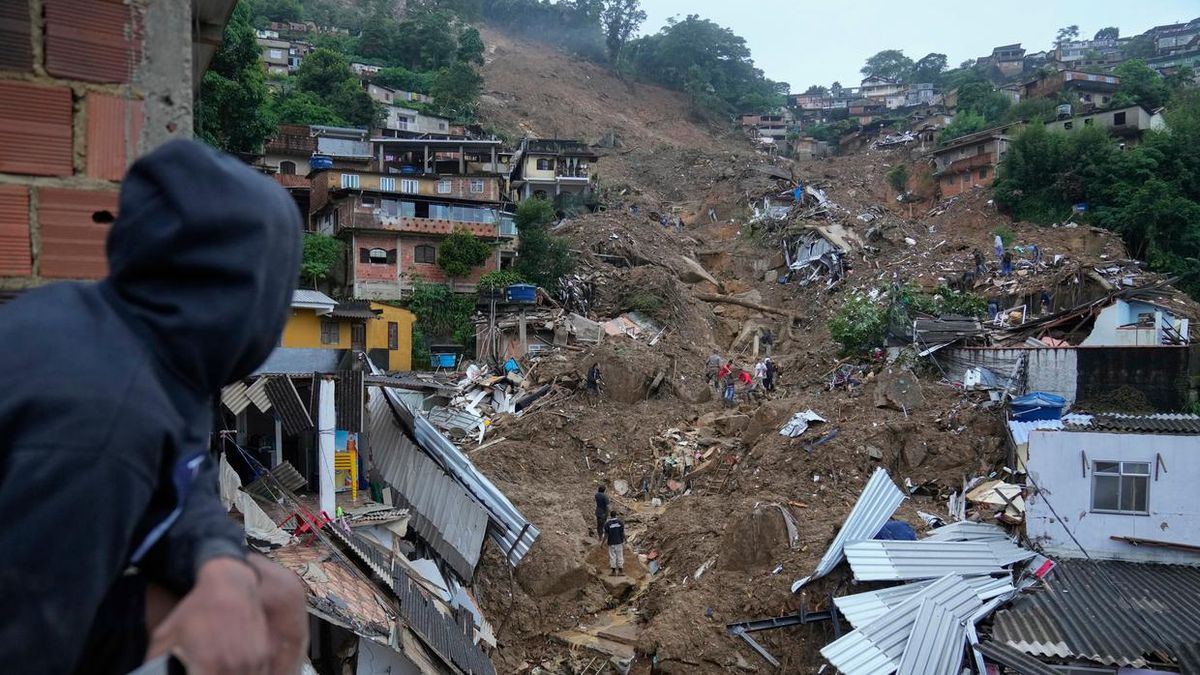“It’s a war scene. You only have to see the walls and see how far the water has reached,” Cláudio Castro, governor of Rio de Janeiro (southeast), said at a press conference in the disaster area at the end of the afternoon. , in the mountainous region of the state.
As of Wednesday night, the government confirmed 80 deaths, a figure that continues to grow over the hours, after the storm that occurred on Tuesday afternoon in the city located 68 km north of Rio.
“It was the worst rain since 1932,” Castro declared.
Some points in Petrópolis received up to 260 millimeters of rain in less than six hours, a volume higher than the historical average for all of February (240 mm), according to the MetSul meteorological agency.
According to the Civil Defense of the Mayor’s Office, 325 incidents occurred in 24 hours, including 269 landslidesin addition to the collapse of dozens of houses and the fall of walls and trees.
Videos viralized on social networks showed shocking images of some roads in Petrópolis turned into fast-flowing rivers dragging everything as they passed with excessive force.
Rescue teams continued to work to help those affected, many of whom were desperately looking for family and friends in a scene of houses reduced to rubble and vehicles piled up between water and mud, AFP journalists found.
“No one expected it, it was desperate, very sad. I have friends who are missing,” said Elisabeth Pio Lourenço, 32, a resident of the devastated neighborhood of Alto da Serra.
rescues
So far, the authorities 24 people were rescued alive and they have not reported the number of missing.
“I never want to see rain again in my life,” exclaimed another neighbor, Jerónimo Leonardo, 47, who on Tuesday had to rush out of his house, which was relatively preserved.
Petrópolis: flagra video moment of nose slide #Shorts
embedded
The church of Santo Antonio, close to the disaster area, opened its doors to welcome more than 150 people, evacuated from their homes due to flooding or the danger of landslides due to the storm. Many others were cared for mainly in schools.
“Many of those who arrive have lost everything, or lost their relatives. It’s a difficult situation,” Celestino, the church’s pastor, told AFP.
About 400 soldiers worked in relief tasks on the spot together with Civil Defense teams and firefighters, with dogs, bulldozers, trucks, boats and a dozen aircraft.
The Brazilian government warned of a “very high” risk of new landslides in the mountainous region of Rio de Janeiro, “especially in Petrópolis”, due to the forecast of more rains for the next few days that could cause new “floods”.
During his visit to Russia, President Jair Bolsonaro wished that “God comfort the relatives” of the victims of the “catastrophe” in Petrópolis, during a joint press conference with the host, Vladimir Putin, whom he thanked for his solidarity in the face of what happened.
The president confirmed that he will visit the area on Friday, when he returns.
“The accumulated rainfall (…) is unusual,” said meteorologist Estael Sias. in a note on the site MetSul, where he assures that this disaster “is neither the first nor will it be the last”, given the climatic, topographical and population characteristics of the region.
Brazil has experienced episodes of intense rains in the last three months, especially in the states of Bahia (northeast) and Minas Gerais (southeast), which have left dozens dead and caused damage to hundreds of municipalities.
Scientists argue that due to climate change, extreme weather events will become more and more frequent.
In January 2011, more than 900 people died in the mountainous region of Rio state due to heavy rains, which caused floods and landslides in a vast area, including Petrópolis and its neighbors Nova Friburgo, Itaipava and Teresópolis.
Petrópolis, with 300,000 inhabitants, is a tourist city due to its historical value, the surrounding nature and a more pleasant climate compared to coastal Rio de Janeiro, due to its height.
In the past it was the summer resort of the former Brazilian Imperial Court. During the 18th and early 19th centuries, it was a vital point on the road between Rio and Minas Gerais that charmed Emperor Pedro I with its climate and landscape.
Source: Ambito
David William is a talented author who has made a name for himself in the world of writing. He is a professional author who writes on a wide range of topics, from general interest to opinion news. David is currently working as a writer at 24 hours worlds where he brings his unique perspective and in-depth research to his articles, making them both informative and engaging.




